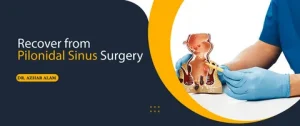health
Conquer Colds: DIY Remedies for a Speedy Recovery

Meet Dr. Sarah Green: Dr. Sarah Green, a licensed naturopathic physician with over a decade of experience, is passionate about empowering individuals to take control of their health using natural approaches. In this article, Dr. Green explores powerful DIY solutions to help you kick those colds naturally and get back on your feet faster.
Understanding the Common Cold: A Natural Approach
The common cold, a viral infection of the upper respiratory tract, is a frequent visitor, especially during seasonal transitions. While coughs, sneezes, and a stuffy head might not be life-threatening, they can certainly leave you feeling miserable. Conventional medicine offers over-the-counter medications for symptomatic relief, but some people prefer a more natural approach.
This article delves into the world of natural remedies, exploring readily available solutions that can help alleviate cold symptoms and promote a faster recovery. By supporting your body’s natural healing mechanisms, you can experience relief without the potential side effects often associated with medications.
Powerful DIY Remedies for Cold Relief
Nature has a treasure trove of remedies waiting to be discovered. Here are some powerful DIY solutions Dr. Green recommends to combat common cold symptoms:
- Soothing Steam Therapy: A warm steam bath or inhalation can be incredibly effective in loosening mucus congestion and clearing those blocked airways. Add a few drops of essential oils like eucalyptus or peppermint to the steaming water for additional relief. Studies published in the National Institutes of Health (NIH) database suggest that steam inhalation can significantly improve symptoms of upper respiratory tract infections [1].
- Hydration Powerhouse: Herbal Teas and Water: Staying hydrated is crucial when battling a cold. Warm liquids like herbal teas can soothe a scratchy throat and loosen mucus. Ginger tea, with its anti-inflammatory properties, can help alleviate a sore throat, while peppermint tea can ease congestion. Don’t forget plain water – it’s essential for flushing toxins and keeping your body functioning optimally.
- Gargle Away Soreness: Salt Water Solution: A simple saltwater gargle can work wonders for a sore throat. The salt helps reduce inflammation and provides temporary relief from that scratchy, uncomfortable feeling. Mix half a teaspoon of table salt in a glass of warm water and gargle several times a day.
- Restorative Power of Sleep: Getting enough sleep is vital for overall health and recovery. When you’re battling a cold, your body needs extra rest to fight off the virus. Aim for at least 7-8 hours of sleep each night.
- Nourishing Your Body with Essential Vitamins: Certain vitamins and minerals play a crucial role in immune function. Consider incorporating foods rich in Vitamin C, Zinc, and Vitamin D into your diet. Citrus fruits, leafy greens, and fatty fish are excellent sources of these essential nutrients. Alternatively, consult your doctor about potential vitamin supplements to support your immune system during a cold.

Picture by: Google Gemini
Natural vs. Conventional Cold Remedies
| Feature | Natural Remedies | Conventional Remedies |
| Ingredients | Natural ingredients like herbs, honey, and spices | Over-the-counter medications containing decongestants, antihistamines, or pain relievers |
| Side Effects | Generally less likely to cause side effects | May cause drowsiness, dry mouth, or stomach upset |
| Focus | Supports the body’s natural healing response | Targets specific symptoms for temporary relief |
Boosting Your Immune System: Prevention is Key
While natural remedies can alleviate cold symptoms, preventing them in the first place is ideal. Here are some tips from Dr. Green to strengthen your immune system and reduce your susceptibility to colds:
- Frequent Handwashing: This simple act is one of the best ways to prevent the spread of germs. Wash your hands thoroughly with soap and water for at least 20 seconds, especially after being in public places.
- Balanced Diet: A diet rich in fruits, vegetables, and whole grains provides your body with the essential vitamins and minerals it needs to fight off infections.
- Manage Stress: Chronic stress can weaken your immune system. Practice relaxation techniques like yoga or meditation to manage stress levels.
- Regular Exercise: Engaging in moderate exercise can boost your immune system’s function. Aim for at least 30 minutes of moderate-intensity exercise most days of the week.
When to Seek Medical Attention
While natural remedies can be very effective, there are times when seeking medical attention is crucial. If you experience any of the following symptoms, consult your doctor:
- Fever above 100.4°F (38°C) for more than 3 days
- Severe earache or facial pain
- Difficulty breathing or shortness of breath
- Persistent cough that produces green or bloody mucus
- Sudden and severe headache
- Symptoms that worsen significantly or don’t improve after a week
Conclusion: Embrace Natural Wellness
Natural remedies offer a safe and effective way to manage cold symptoms and promote a faster recovery. By incorporating these DIY solutions into your wellness routine, you can empower your body’s natural healing mechanisms and experience relief without harsh chemicals. Remember, prevention is key. Maintaining a healthy lifestyle with a balanced diet, regular exercise, and adequate sleep goes a long way in building a strong immune system – your body’s first line of defense against common colds.
Embrace natural wellness and experience the joy of a healthier you!
Beauty Fitness
Smooth Skin in Inverness: A Comprehensive Guide to Skincare

Smooth, healthy skin is more than just a cosmetic ideal, it is a reflection of self-care, confidence, and overall wellbeing. While hair removal plays an important role in grooming routines, it is only one part of achieving soft, radiant skin.
For residents of Inverness, a combination of consistent skincare, professional treatments and healthy lifestyle choices can dramatically improve skin texture, creating lasting smoothness and enhancing overall appearance.
In this guide, we explore a comprehensive approach to achieving and maintaining silky skin beyond the surface, offering actionable steps suitable for busy lifestyles.

Understanding Skin Texture
Skin texture refers to the look and feel of your skin’s surface, encompassing smoothness, firmness, and evenness. Uneven skin, rough patches and bumps are common concerns for many adults. Multiple factors influence skin texture including genetics, age, environmental exposure, and skincare habits.
Sun damage, dehydration and irritation from shaving or waxing can further exacerbate unevenness, creating a dull or rough appearance. Hair removal, while effective for reducing unwanted hair, can sometimes contribute to irritation, ingrown hairs, and uneven texture if not done properly.
Understanding the factors that affect skin health is crucial for developing a routine that supports long-term smoothness. By addressing both external and internal contributors, Inverness residents can achieve visibly softer, healthier skin.
Daily Skincare Routine for Smoother Skin
Consistency is key when it comes to maintaining smooth skin. Establishing a simple yet effective daily routine ensures your skin stays hydrated, exfoliated, and protected from environmental stressors.
Morning Routine:
- Cleansing Start the day with a gentle cleanser to remove oil, dirt, and impurities.
- Exfoliation 2–3 times per week use a mild exfoliant to prevent rough patches and improve skin renewal.
- Moisturizing: Apply a lightweight cream or gel for hydration without clogging pores.
- Sun Protection: Use SPF 30+ to prevent UV damage which can cause texture irregularities and premature aging.
Evening Routine:
- Cleansing removes makeup, sweat and environmental pollutants.
- Hydration night creams or serums replenish moisture and support skin repair.
- Targeted Treatments apply spot treatments or gentle serums for areas of concern.
Optional Table for Routine Overview:
| Step | Recommended Product | Frequency |
| Cleansing | Gentle cleanser | Daily |
| Exfoliation | Mild chemical or physical exfoliant | 2–3x/week |
| Moisturizing | Lightweight cream or serum | Daily |
| Sun Protection | SPF 30+ | Daily |
Implementing a consistent routine prepares the skin for professional treatments such as Laser Hair Removal in Inverness, ensuring optimal results and minimal irritation.
Professional Treatments Beyond Hair Removal
While daily care is foundational, professional treatments can significantly enhance skin texture, addressing concerns that home routines may not fully resolve.
laser hair removal in Inverness provides smooth, hair-free skin and reduces the risk of ingrown hairs and irritation compared to traditional shaving or waxing. This allows the skin to maintain a more even, polished surface over time.
Other professional options include:
- Chemical Peels remove dead skin cells, promote cell regeneration, and improve overall texture.
- Microdermabrasion gently resurfaces the skin, reducing roughness, dullness, and minor imperfections.
- Hydrating Facials deeply moisturize and soften the skin, particularly beneficial for dry or sensitive areas.
- Laser Skin Resurfacing reduces fine lines, scarring and uneven texture for a smoother appearance.
Combining hair removal with these treatments ensures long-lasting smoothness and healthier skin. Professional guidance also reduces the risk of irritation or damage from improper technique.
Lifestyle Habits That Enhance Skin Texture
Your daily habits play a major role in achieving and maintaining smooth skin. Healthy lifestyle choices can amplify the effects of both at-home routines and professional treatments.
Key habits include:
- Nutrition: A balanced diet rich in vitamins A, C, D, E, and calcium supports collagen production and skin health.
- Hydration: Adequate water intake keeps skin plump and reduces dryness.
- Exercise: Improves circulation, oxygenates skin cells, and encourages a natural glow.
- Sleep: Supports cell regeneration and reduces the appearance of fatigue or rough patches.
- Stress Management: Yoga, meditation, or relaxation techniques prevent skin flare-ups linked to tension and hormonal imbalances.
Integrating these habits alongside treatments like Laser Hair Removal in Inverness ensures long-lasting smoothness and a radiant complexion.
At-Home Maintenance Tips
Maintaining smooth skin between professional appointments is crucial for long-term results. Practical at-home strategies include:
- Gentle Exfoliation prevents buildup of dead skin cells and keeps hair follicles clear.
- Moisturizing uses creams or oils tailored to your skin type to retain softness.
- Avoid Overdoing Treatment excessive scrubs or harsh chemicals can damage the skin barrier.
- Portable Care small travel kits with moisturizer or facial mist allow touch-ups while on-the-go.
- Teeth Whitening Inverness maintaining an overall grooming routine including smile care, complements skin care and boosts confidence.
By pairing home care with professional services, you ensure smooth, healthy skin and reduce the risk of irritation or uneven texture.
Boosting Confidence Through a Complete Approach
Smooth skin isn’t just about appearance, it influences confidence, posture, and overall presence. By combining effective grooming routines with professional treatments, individuals can present their best self in personal and professional settings.
Benefits of a comprehensive approach:
- Reduces time spent on daily grooming by using long-lasting treatments.
- Enhances self-esteem and comfort in social situations.
- Promotes a consistent, polished appearance without excessive effort.
- Integrates complementary services like teeth whitening Inverness for overall grooming confidence.
Focusing on holistic grooming ensures that both skin and smile project care and professionalism, reinforcing positive self-perception.
Maintaining Long-Term Results
Consistency is key for retaining smooth, silky skin. Follow these practices to maintain results:
- Scheduled Professional Treatments keep periodic appointments for Laser Hair Removal in Inverness or facials.
- Regular Exfoliation and Hydration prevents rough patches and supports ongoing softness.
- Sun Protection daily SPF prevents UV-induced roughness and premature ageing.
- Healthy Lifestyle Choices nutrition, hydration, sleep and stress management contribute to ongoing skin health.
A proactive approach ensures that your investment in skin and grooming delivers long-lasting results, reducing maintenance stress and enhancing overall confidence.
Conclusion
Achieving smooth, silky skin in Inverness extends far beyond hair removal. Through a combination of consistent daily care, professional treatments like laser hair removal and healthy lifestyle choices, residents can enjoy soft, radiant skin while reducing irritation and improving texture.
Complementary services, including teeth whitening elevate overall grooming and confidence, creating a polished, self-assured appearance. Investing in skin health is an investment in wellbeing, self-esteem, and personal presence.
Inverness provides access to expert guidance and services that make the journey to smoother skin effective, enjoyable and sustainable ensuring lasting confidence and beauty at every stage of life.
Care
Understanding the Costs of an Emergency Dental Visit in Grimsby

Dental emergencies can strike without warning, and when they do, understanding the potential costs involved is crucial. Unlike routine check-ups, emergency dental visits can range in price depending on the type of treatment, urgency, and location.
Residents of Grimsby often face these unexpected dental situations, and knowing what to expect financially can help alleviate some of the stress that accompanies a sudden dental issue.

Common Reasons for Emergency Dental Visits
Dental emergencies vary widely, but the most common reasons include severe toothache, cracked or broken teeth, lost fillings, abscesses, and trauma to the mouth from accidents. These issues not only cause discomfort but can also lead to further complications if not addressed promptly.
For instance, a severe toothache may indicate an infection requiring immediate treatment to prevent the infection from spreading. Similarly, a broken tooth might require urgent attention to avoid more complex restorative procedures later. Understanding the nature of the emergency is the first step in anticipating the associated costs.
Factors That Influence the Cost of Emergency Dental Care
Several factors contribute to the cost of an emergency dental visit in Grimsby:
- Type of Treatment: The treatment required significantly impacts the price. Simple procedures, such as pain relief or temporary fillings, tend to be less expensive, whereas more complex treatments, including root canals or tooth extractions, can cost considerably more.
- Urgency: Emergency dental services provided outside regular hours, such as evenings, weekends, or public holidays, may come with higher fees. The convenience of accessing immediate care often comes at an additional cost.
- Dental Practice Location: Dental practices in central Grimsby may have different pricing compared to those in suburban areas. While central locations may charge more, they often provide quicker access and a broader range of services.
- Materials and Technology: Modern dental technology, such as digital X-rays or advanced anesthetic methods, can add to the overall cost but often improves treatment outcomes and comfort.
Average Cost of Emergency Dental Treatments
The price range for emergency dental treatments in Grimsby varies depending on the procedure. Here’s a rough estimate:
- Consultation and Examination: £50–£120
- Filling Replacement: £60–£150
- Tooth Extraction: £80–£250
- Root Canal Treatment: £200–£500
- Temporary Crown or Repair: £150–£350
These estimates provide a general guide; the actual cost will depend on the complexity of the procedure and the dental practice.
The Role of Dental Insurance
Dental insurance can significantly reduce the financial burden of emergency visits. Many plans cover partial or full costs for urgent care, depending on the policy. Patients are advised to review their insurance coverage carefully to understand what types of emergency treatments are included and any associated limits or waiting periods.
Additionally, some insurance providers offer cash-back schemes or discounts for members, which can be particularly beneficial for those requiring frequent dental care. However, not all emergencies are covered, so it is essential to confirm coverage before seeking treatment.
Finding the Right Emergency Dental Care in Grimsby
Choosing the right dental provider during an emergency can be overwhelming. Residents seeking immediate attention should look for clinics offering same-day appointments and experienced practitioners. If you’re in urgent need, connecting with an emergency dentist in Grimsby can help you access timely treatment, alleviating pain and preventing further dental complications.
It’s also advisable to check reviews, qualifications, and available services to ensure that the practice can address your specific needs effectively.
Preventive Care to Minimize Emergency Costs
While emergency dental are sometimes unavoidable, preventive care can reduce the likelihood of urgent situations. Regular dental check-ups, maintaining oral hygiene, and seeking early treatment for minor dental issues can prevent escalation into emergencies.
For example, scheduling regular visits with a hygienist in Grimsby can help remove plaque and tartar build-up, detect early signs of gum disease, and provide personalized advice for maintaining oral health. Preventive care not only improves overall dental wellbeing but also lowers the risk of unexpected expenses.
Tips for Managing Emergency Dental Costs
- Ask for a Breakdown: Always request a detailed estimate before treatment to understand exactly what you are paying for.
- Compare Clinics: Different practices may offer varying prices for similar services. Comparing can help you find the best value without compromising quality.
- Consider Payment Plans: Some dental clinics provide flexible payment options for costly procedures.
- Prioritise Urgency: Not all dental issues require immediate attention. Understanding the urgency can help you make cost-effective decisions.
Conclusion
Dental emergencies in Grimsby can be stressful, both physically and financially. Being aware of the potential costs, exploring preventive care, and knowing where to find reliable practitioners can make a significant difference.
Whether you require immediate assistance from an emergency dental or regular preventive care from a hygienist, planning ahead ensures smoother, more affordable treatment.
For trusted, professional guidance and support, the EDA Group remains a reliable resource for residents facing unexpected dental issues.
It’s also advisable to check reviews, qualifications, and available services to ensure that the practice can address your specific needs effectively.
health
Umbilical Pilonidal Sinus: Comprehensive Treatment Options

Umbilical pilonidal sinus (UPS) is a rare condition that many may not be familiar with. While it may seem straightforward at first glance, it can lead to persistent discomfort, infections, and discharge if not accurately diagnosed.
Unlike the more common pilonidal sinus that typically appears near the tailbone, UPS develops in or around the belly button.
At Thrissur Piles Clinic, led by Dr. Raviram S., an experienced specialist in this field, we offer comprehensive diagnosis and advanced treatments, including laser surgery specific to umbilical pilonidal sinus conditions.

What is Umbilical Pilonidal Sinus?
An umbilical pilonidal sinus is a small tunnel or cavity that forms in the navel. This cavity can trap hair, dirt, and dead skin cells, often leading to infections. Over time, it may cause chronic discharge, swelling, and discomfort.
While most pilonidal sinus cases occur near the tailbone, UPS accounts for less than 1% of instances, making it both rare and often misdiagnosed. For accurate evaluation, it’s vital to consult a specialist experienced in treating pilonidal sinuses.
Causes of Umbilical Pilonidal Sinus
Several factors may contribute to the development of UPS:
- Hair Penetration: Hair from the abdomen can be pushed into the belly button, breaking the skin.
- Deep Umbilicus: A naturally deep belly button can create a space where debris collects.
- Friction: Tight clothing can force hair into the skin.
- Poor Hygiene: Accumulated sweat and dirt may exacerbate the condition.
Risk factors include young men, individuals with excessive body hair, and those with subpar hygiene practices.
Symptoms of Umbilical Pilonidal Sinus
Patients suffering from UPS may experience the following symptoms:
- Tenderness or pain around the navel
- Foul-smelling discharge or pus from the area
- Redness or swelling in the vicinity
- Occasionally, bleeding or blood-stained discharge
- Visible hair from the sinus opening
- Frequent infections or abscesses
If left untreated, these symptoms can persist and negatively impact one’s quality of life.
Diagnosis of Umbilical Pilonidal Sinus
At Thrissur Piles Clinic, we take a meticulous approach to diagnosing UPS to differentiate it from other umbilical issues like hernias or granulomas.
Diagnosis Steps:
- Detailed Medical History: Discussing the duration and nature of symptoms.
- Clinical Examination: Inspecting for hair, swollen areas, or discharge.
- Ultrasound: Used to visualize the extent of the sinus tract.
- Sinogram or MRI: Conducted if complexities arise, to assess deeper structures.
Dr. Raviram S. utilizes his extensive experience as a proctologist to ensure precise diagnoses before proceeding with treatment.
Treatment Options at Thrissur Piles Clinic
Treatment strategies depend on the severity and frequency of UPS symptoms. We offer both conservative and surgical options.
1. Conservative Management
For early cases or mild symptoms, options include:
- Hair removal around the navel
- Daily antiseptic cleaning
- Prescription antibiotics
- Maintaining good hygiene and avoiding tight clothing
While these measures can alleviate symptoms, they may not provide a permanent solution.
2. Surgical Treatments
For recurring symptoms, surgical intervention may be the best course of action.
a. Laser Umbilical Pilonidal Sinus Surgery
- Minimally invasive with smaller incisions
- Reduced pain compared to traditional methods
- Quicker recovery time, often allowing patients to resume normal activities within a few days
- Minimal scarring with better aesthetic results
- Low rate of recurrence
This advanced treatment option is offered at Thrissur Piles Clinic, making it popular among many patients.
b. Traditional Surgical Excision
- Full removal of the sinus tract
- May require umbilicus reconstruction for cosmetic enhancement
- Generally involves a longer recovery than laser surgery
Both procedures are safe and effective when conducted by a skilled surgeon like Dr. Raviram S.
Why Opt for Thrissur Piles Clinic for Your Treatment?
- Expertise: Dr. Raviram S. boasts over 15 years of experience in proctology and advanced sinus surgeries.
- Modern Facilities: Our clinic features cutting-edge imaging and laser surgery technology.
- Comprehensive Care: We provide thorough support from diagnosis through treatment and aftercare.
- Patient-Focused Approach: Our aim is to ensure painless, scar-minimizing treatments with quick recovery times.
- Expanded Services: Besides UPS treatment, we specialize in piles, fissures, and fistula care across Kerala.
- Trusted Reputation: Recognized as a leading clinic for piles and pilonidal sinus care in Thrissur, we serve patients from surrounding areas.
What to Expect During Recovery After Surgery
Recovery varies according to the surgical method used, but typically includes:
- Initial Days: Mild discomfort, localized swelling, and frequent dressing changes. Warm baths can aid in healing.
- Weeks 1–2: Patients can gradually return to light activities while avoiding tight clothing and heavy lifting.
- 4–6 Weeks: Most surgical sites heal, allowing for the resumption of regular activities.
- Ongoing Care: Maintaining hygiene and hair removal around the navel, along with regular follow-ups with your surgeon.
With effective sinus excision and any necessary reconstruction, recurrence rates remain low, as documented in numerous case studies.
Consult an Umbilical Pilonidal Sinus Specialist in Thrissur
If you are experiencing discomfort, discharge, or swelling around your belly button, don’t dismiss it as a simple infection. An umbilical pilonidal sinus specialist can provide an accurate diagnosis and long-lasting treatment solutions.
At Thrissur Piles Clinic, Dr. Raviram S. and our team are dedicated to offering advanced umbilical pilonidal sinus treatment in Thrissur, including laser surgery for expedited recovery.
Contact us at 9961001199 to schedule your consultation. Visit us at Zabs Fort, Collectorate Road, West Fort, Thrissur, Kerala, to learn more.
Don’t let rare conditions go undiagnosed. Seek the best umbilical pilonidal sinus treatment in Thrissur and return to a healthier, more comfortable life with confidence.
-
Business2 years ago
Cybersecurity Consulting Company SequelNet Provides Critical IT Support Services to Medical Billing Firm, Medical Optimum
-
Business2 years ago
Team Communication Software Transforms Operations at Finance Innovate
-
Business3 years ago
Project Management Tool Transforms Long Island Business
-
Business2 years ago
How Alleviate Poverty Utilized IPPBX’s All-in-One Solution to Transform Lives in New York City
-
health3 years ago
Breast Cancer: The Imperative Role of Mammograms in Screening and Early Detection
-
Sports3 years ago
Unstoppable Collaboration: D.C.’s Citi Open and Silicon Valley Classic Unite to Propel Women’s Tennis to New Heights
-
Art /Entertainment3 years ago
Embracing Renewal: Sizdabedar Celebrations Unite Iranians in New York’s Eisenhower Park
-
Finance3 years ago
The Benefits of Starting a Side Hustle for Financial Freedom






























